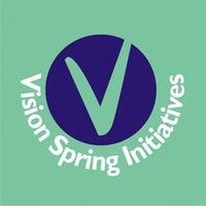 In the context of shrinking space, beyond the implication this has for all human rights defenders, women human rights defenders are subject to attacks simply because they are women. Threats against women express themselves rather differently than threats against men. The former UN Special Rapporteur on human rights defenders, Margaret Sekaggya, pointed out that women are at greater risk than men when it comes to specific forms of violence and abuse. These violations are linked to traditions, norms, and perceptions about how women should behave in society.
In the context of shrinking space, beyond the implication this has for all human rights defenders, women human rights defenders are subject to attacks simply because they are women. Threats against women express themselves rather differently than threats against men. The former UN Special Rapporteur on human rights defenders, Margaret Sekaggya, pointed out that women are at greater risk than men when it comes to specific forms of violence and abuse. These violations are linked to traditions, norms, and perceptions about how women should behave in society.
Each arrest or forced disappearance, each public gathering or demonstration, results in a risk of being raped or sexually harassed. Even suspected sexual violence could deprive a woman of her reputation. Smear campaigns are common, using as a starting point the conservative norms of how women should behave. Threats against women human rights defenders’ families and children are often used as a way to silence activists. Misinformation and false accusations about the work of women human rights defenders cause former allies, their community, and even close family members to lose trust and turn their backs on them. They become isolated.
Women human rights defenders are crucial actors for change in their societies. They challenge deeply rooted patriarchal norms on a daily basis simply by being professional, outspoken women, as well as through the nature of their work. Groups that have historically been excluded or experienced social discrimination are the ones most affected by the restrictions. They are often targeted by both state and non-state actors. For civil society to be effective in advocating for democracy and human rights, it has to be diverse and inclusive, so that the voices of marginalized groups can be heard. This precondition faces serious risks as the shrinking space phenomenon hits unevenly.
There are some obstacles that hinder women’s participation in peaceful protests. The obstacles include gender-based violence (politically motivated violence targeting women human rights defenders to silence them, often disguised as “common” domestic violence), threats, and slander (including calling women names such as “prostitute” or “bad mother”). Obstacles also include small yet crucial matters such as “forgetting” to inform women of important meetings or scheduling gatherings at night-time to make it difficult for women to attend. This is done in a systematic way to stop women human rights defenders from gaining political influence. The space is shrinking for civil society, and this process adds to a situation all too well-known among women human rights defenders, who have always faced extensive obstacles and difficulties in their work.
It is important to note that the multiple obstacles that women activists need to deal with – defending why they work in public at all, working in a hostile environment with the constant fear of repression and slander, and struggling to survive financially – lead to exhaustion among women activists. The well-being and health of women activists are also at risk and needs to be addressed
